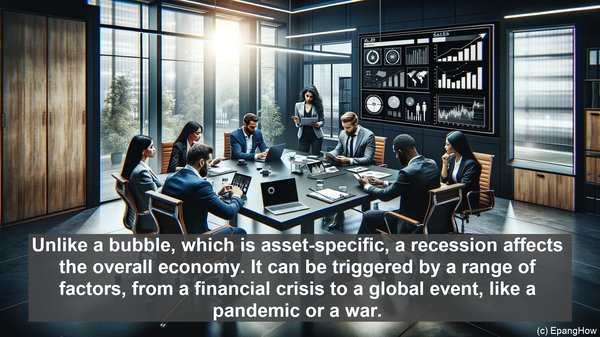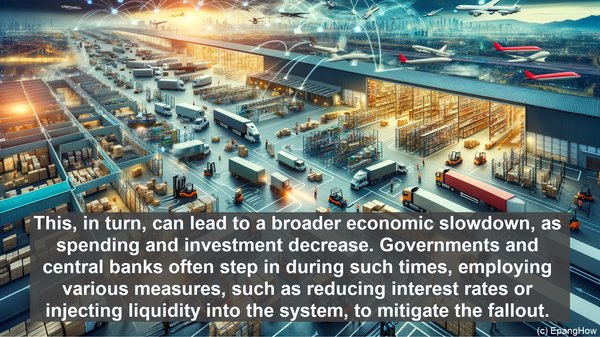Introduction: The Ebb and Flow of Economies
Hello, and welcome to our video on the intriguing world of economic cycles. Today, we’ll be focusing on two significant events that shape these cycles: bubbles and recessions. While both have the potential to disrupt the financial equilibrium, they differ in their origins, characteristics, and aftermath. So, let’s dive in!
Unraveling the Bubble Phenomenon
A bubble, in economic terms, refers to a situation where the price of an asset, be it real estate, stocks, or even cryptocurrencies, becomes detached from its intrinsic value. This detachment is often fueled by speculative buying, driven by the expectation of further price increases. As more investors jump on the bandwagon, the demand surges, causing prices to skyrocket. However, this upward trajectory is unsustainable, as it lacks a solid foundation. Eventually, the bubble bursts, leading to a sharp decline in prices, often resulting in significant financial losses for those involved.
The Anatomy of a Bubble
Bubbles are characterized by several key features. Firstly, there’s the ‘herd mentality,’ where investors, driven by the fear of missing out, flock to the asset, further driving up its price. Then, there’s the ‘greater fool theory,’ which assumes that even if the asset is overvalued, there will always be someone willing to buy it at a higher price. This mindset perpetuates the bubble, until, of course, it can no longer be sustained. Additionally, the media often plays a crucial role in fueling the frenzy, with headlines and stories of overnight millionaires adding to the allure. Lastly, regulatory factors, or the lack thereof, can also contribute to the formation and growth of a bubble.

The Aftermath: Dealing with a Burst Bubble
When a bubble bursts, the consequences can be far-reaching. Apart from the immediate financial losses, there’s also the psychological impact, as investor confidence takes a hit. This, in turn, can lead to a broader economic slowdown, as spending and investment decrease. Governments and central banks often step in during such times, employing various measures, such as reducing interest rates or injecting liquidity into the system, to mitigate the fallout. However, the road to recovery can be long and arduous, with the effects of a burst bubble lingering for years.
Recessions: A Period of Contraction
While a bubble is often associated with a sudden, dramatic event, a recession is more of a gradual process. It refers to a significant decline in economic activity, usually characterized by a contraction in GDP, rising unemployment, and a general slowdown in various sectors. Unlike a bubble, which is asset-specific, a recession affects the overall economy. It can be triggered by a range of factors, from a financial crisis to a global event, like a pandemic or a war.

The Phases of a Recession
A recession typically goes through several phases. It starts with a ‘peak,’ where the economy is at its highest point, followed by a ‘downturn,’ as signs of a slowdown emerge. The downturn then transitions into a ‘trough,’ the lowest point of the recession, before finally entering a ‘recovery’ phase. The duration of each phase can vary, with some recessions being relatively short-lived, while others can span years.
Navigating a Recession: Strategies and Challenges
During a recession, individuals, businesses, and governments face a myriad of challenges. Unemployment rises, making it harder for people to secure jobs. Businesses, especially those in sectors directly impacted by the downturn, may struggle to stay afloat, leading to closures and layoffs. Governments, on their part, often implement fiscal stimulus measures, such as increased public spending, to revive the economy. However, the success of these strategies depends on various factors, including the severity of the recession and the global economic landscape.
